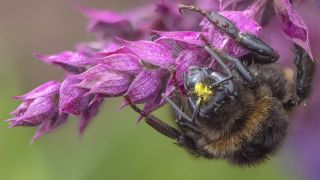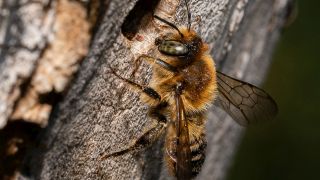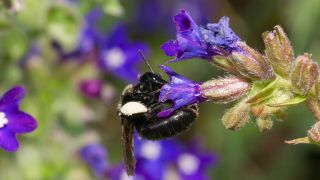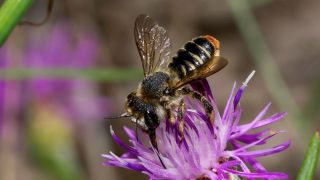Wild bees on the Danube Island
A recent study recorded 136 species of wild bees on the Danube Island.
The island's diverse vegetation allows it to support a wide range of bee species. A study conducted by Vienna University of Natural Resources and Life Sciences (BOKU) under the auspices of the EU LIFE DICCA project looked at populations of wild bees on the Danube Island.
The research work included an assessment of the impact of wildlife protection measures implemented by Municipal Department 45 - Water Management (MA 45) on wild bee populations on the Danube Island.
Diverse habitats
Different species of wild bee require specific types of nesting site and a suitable food supply. The Danube Island has seen a raft of different measures to support species-rich habitats and wildlife niches over the past few years, and these have been particularly beneficial for insects.
The measures include sowing of species-rich wildflower meadows, creation of steep banks, and establishment of meadow orchards and climate gardens with native trees and shrubs. In addition, extensive management of grassland and leaving deadwood in place also create new habitats for wild bees.
Findings
- Overall, 136 species of wild bee were recorded at 23 representative sites on the Danube Island in 2021, i.e. around 20 per cent of the 700 wild bee species that are native to Austria.
- Sites that were especially rich in species included a recently sown wildflower meadow with an adjacent sporadically vegetated embankment near the Freudenau hydroelectric plant (38 wild bee species) and the Phönixteich pond habitat (German) on the northern section of the Danube Island, which features a dug-out earthen bank, meadow and footpath (37 wild bee species).
- The sheep-grazed semi-natural grassland areas on the northern section of the Danube Island have also proven beneficial for wild bees and other insect species: creeping thistle, perennial cornflower and yarrow are avoided by the sheep and serve as a food source for wild bees, which also use patches of open soil as nesting sites.
Final report: Development and evaluation of measures to support wild bees on the Danube Island (8.7 MB PDF) (German)
Measures implemented by the City of Vienna
Municipal Department 45 - Water Management (German), which is responsible for the management and maintenance of the Danube Island, has implemented numerous measures to protect and support wild bees under the auspices of its EU LIFE DICCA project (German).
These include, e.g.:
- Thinning out of dense vegetation cover on sunny patches of deadwood and/or steep banks
- Staggered mowing cycles
- Installation of piles of stones and drystone walls to create nesting sites for wild bees
- Supporting species-rich wildflower meadows
A diverse spectrum of species
What do the dentate longhorn bee, the Mediterranean wood-boring bee, the cuckoo bee Thyreus truncatus, the mining bees Andrena scita and Andrena nasuta and the great banded furrow bee have in common? They all share the diverse habitat of the Danube Island and with a bit of luck you can spot them there.
City of Vienna | Water Management
Any questions, requests, or concerns? Please contact the City Service at contact form





